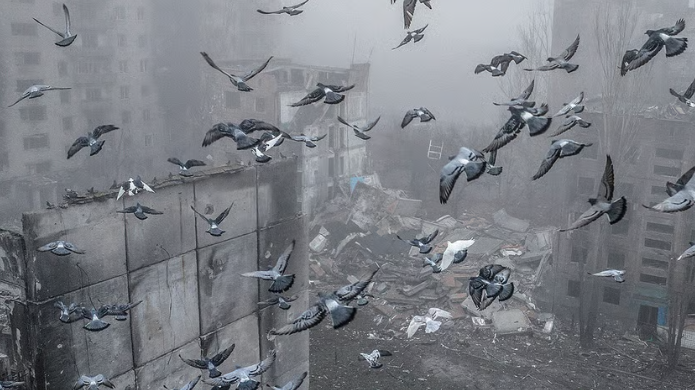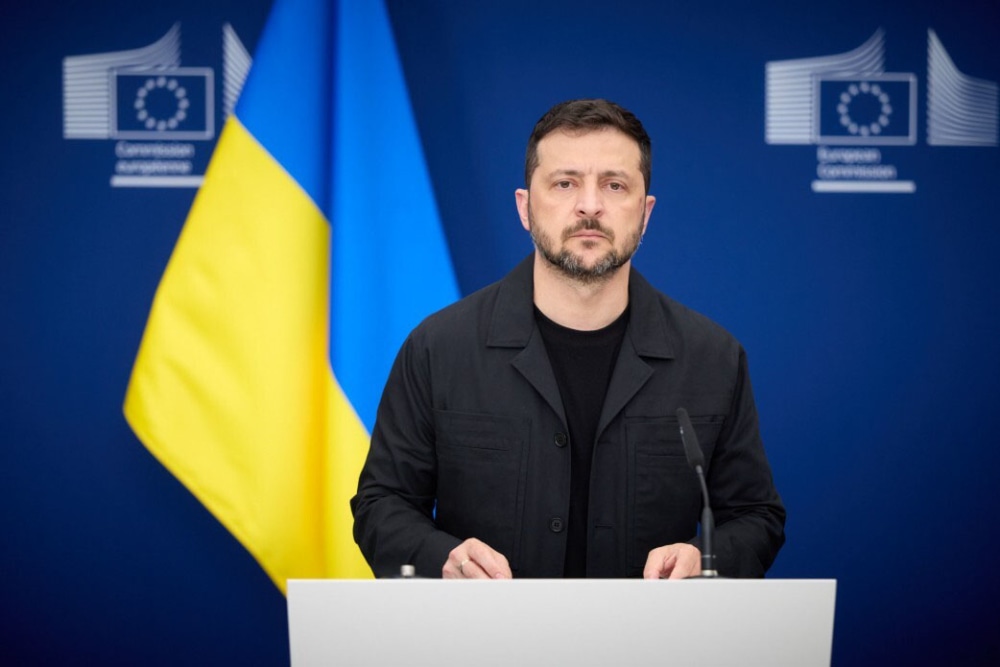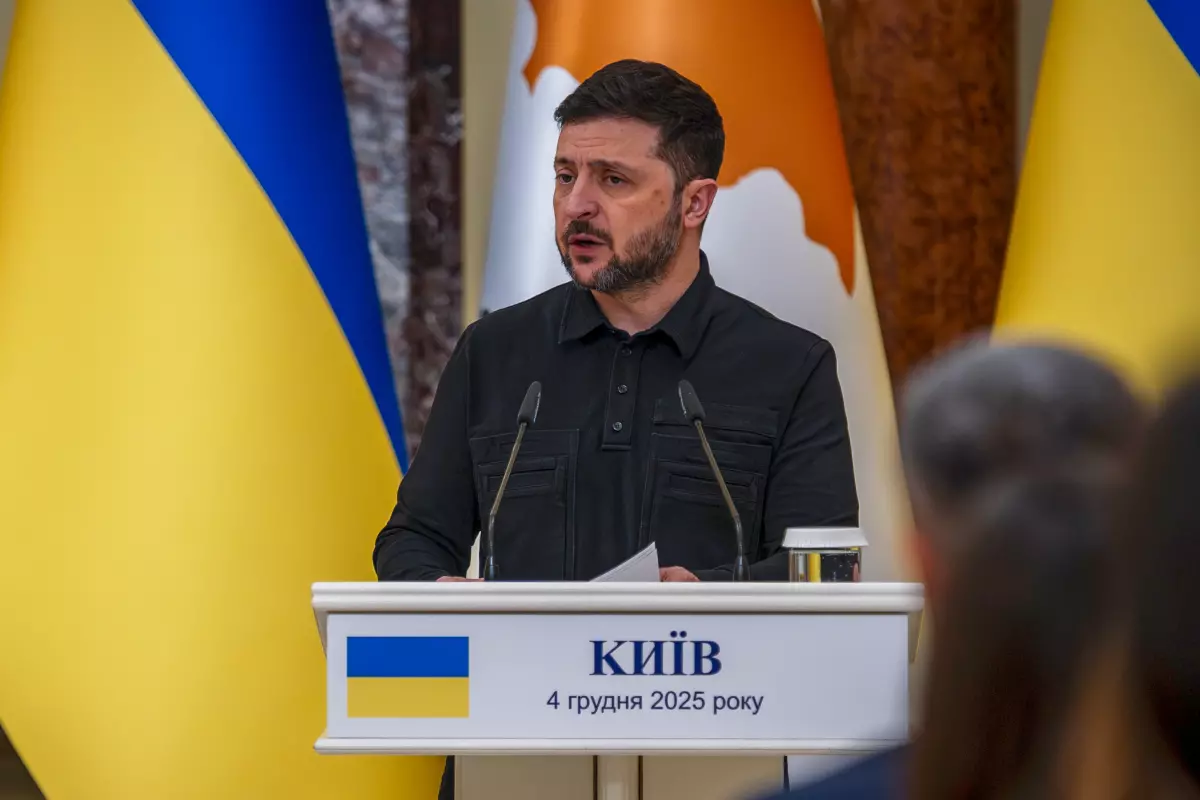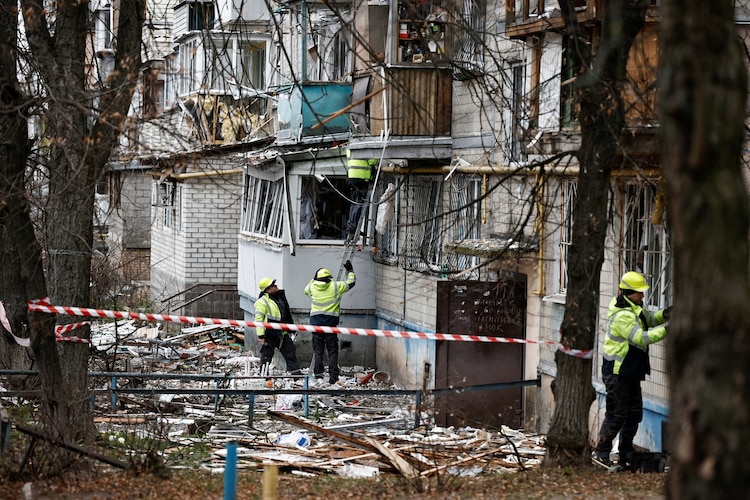
This article is more than
1 year oldUkraine’s Devastated Energy Grid Battles a New Foe: A Heat Wave
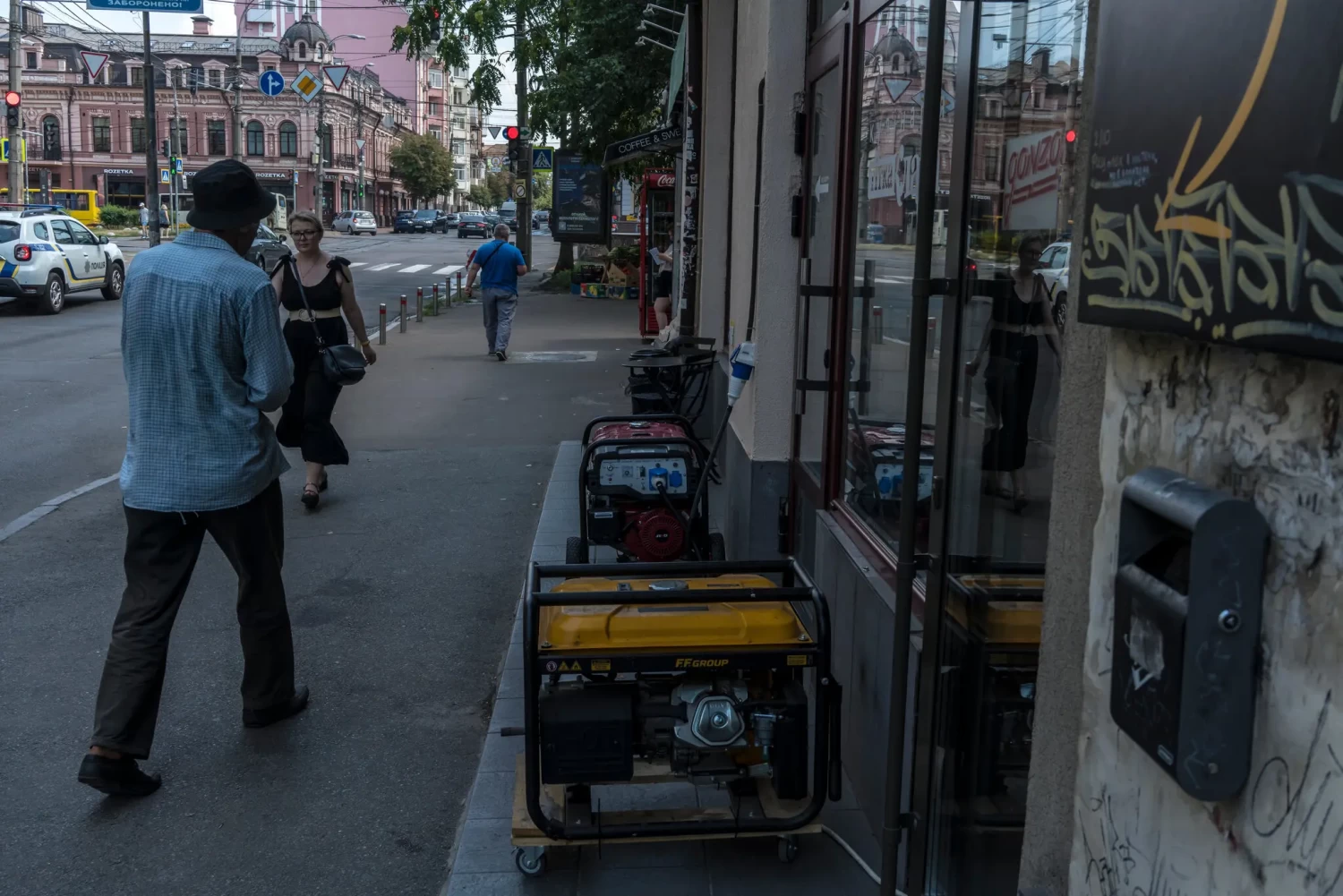
To prevent a collapse of the electricity system, the authorities have imposed rolling blackouts. Experts say it’s a harbinger of what’s to come this winter.
For months, Ukraine’s electricity grid has faced repeated Russian missile and drone attacks that have knocked out power plants and gutted substations. Now, it is contending with another, more unexpected threat: a sizzling heat wave.
Most of the country is experiencing unusually hot summer weather, with temperatures reaching 104 degrees Fahrenheit, or 40 degrees Celsius. It has strained an already hobbled grid, as residents turn on air-conditioners and food businesses use more electricity to cool products. Ukrenergo, the country’s national electricity operator, said Monday that current consumption largely exceeds Ukraine’s generating capacity.
To prevent a collapse of the grid, the authorities have imposed widespread rolling blackouts across the country. In Kyiv, the capital, most buildings are now without power for at least 10 hours a day, including during long periods in the daytime.

On Tuesday, Valerii Kalinichenko, a waiter at Shibuya Sushi Kiosk, a Japanese restaurant in central Kyiv, said his managers had bought a 15-kilowatt gas generator to provide power and keep their food fresh. “Power outages — we are ready for them,” he said.The roar of generators installed by cafes and restaurants has become a soundtrack of the Ukrainian capital since the heat wave began last week.
With power out in the city, residents walk their dogs at night using glow sticks as collars on streets plunged into darkness. During the day, they flock to the banks of the Dnipro River that snakes through Kyiv, hoping to cool themselves off.
Energy experts say the current blackouts are a harbinger of what’s to come this winter. Recent Russian attacks have destroyed about half of Ukraine’s generating capacity, officials say, and there isn’t enough time to repair or rebuild many power plants before the winter.

Oleksandr Kharchenko, head of the Kyiv-based Energy Research Centre, estimated that power cuts in December and January will occur at more or less the same frequency and length as they are now, although other experts have warned of an even worse situation, with outages crippling sewage systems, for example.
Russia began attacking Ukraine’s energy infrastructure in the fall of 2022, targeting substations that distribute electricity. Ukraine managed to repair most of them, allowing it to get through last winter without significant disruption. At the start of this year, the country had about 18 gigawatts of generating capacity, enough to cover peak consumption in summer and winter.
But Russia’s latest campaign against the grid, which began in late March, has directly targeted power plants. Nearly all of Ukraine’s thermal power plants and a third of its hydroelectric power stations have been destroyed, President Volodymyr Zelensky said last month, bringing the country’s generating capacity down to nine gigawatts.
That is not enough to meet peak summer demand, which Mr. Kharchenko estimated at around 12 gigawatts. He added that the heat wave had increased consumption by 25 percent, leaving the government with little choice but to impose the blackouts.
Every day, Ukrainians consult online timetables of planned power cuts that mark outage hours with blue crossed-out lightning bolts and possible blackouts with gray bolts.Ruslan Bakumov, an unemployed resident of Kyiv, said on Tuesday that power outages had become the new normal at his home, causing food in his fridge to rot. He now spends most days sunbathing at a beach beside the Dnipro River.

Around him, hundreds of people, young and old, were enjoying an afternoon on the beach in sweltering temperatures. It looked like an oasis of peace in a city that only last week was hit by one of the deadliest Russian air assaults of the war, killing more than 30 people.
The Ukrainian authorities have been exploring various solutions to try to restore as much generating capacity as possible before winter sets in. They are negotiating with the European Union to remove bottlenecks that limit Ukraine’s electricity import capacity to 1.7 gigawatts; and have pressed Western allies to provide spare parts from decommissioned power plants.
DTEK, Ukraine’s largest private electricity company, has published a list of all the equipment it urgently needs, such as autotransformers, worth a total of $230 million. But officials and experts acknowledge that the repaired power stations could be hit again by Russian missiles before winter, rendering the effort pointless.

Ukrainian officials have also floated the idea of installing hundreds of small gas turbines across the country, which would have the added benefit of dispersing the energy infrastructure, making it harder for Russia to target. Roman Vybranovskyy, the co-founder of the Ukraine Facility Platform, a think tank, said the “idea is great on paper, but hard in reality.”
Connecting gas turbines to communities requires equipment that is not easily available, he said, noting that some recently-installed turbines were not working. “Turbines are not a plug-and-play solution.”
The Ukrainian government has said that power cuts will ease next month, when nuclear power plants currently under repair will be back in operation.
On the riverside beach in Kyiv, several sunbathers were skeptical the situation would improve given Russia’s punishing pace of airstrikes on power plants. “Hope for the best, expect the worst,” said Oleksandr Kravchenko, 37. “Only God knows what will happen.”
Daria Mitiuk contributed reporting.
Constant Méheut reports on the war in Ukraine, including battlefield developments, attacks on civilian centers and how the war is affecting its people. More about Constant Méheut
